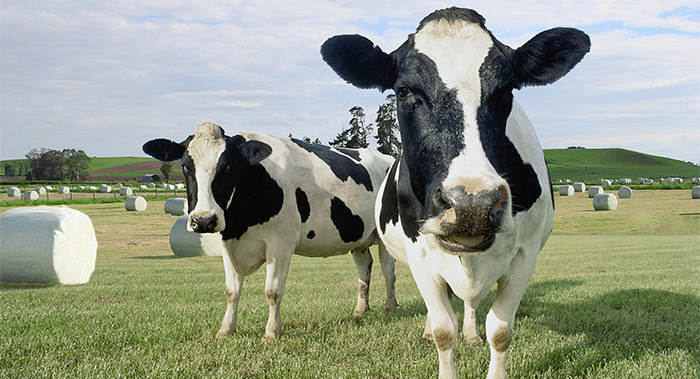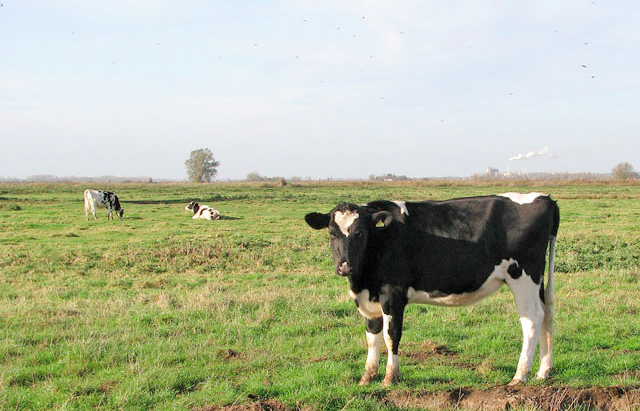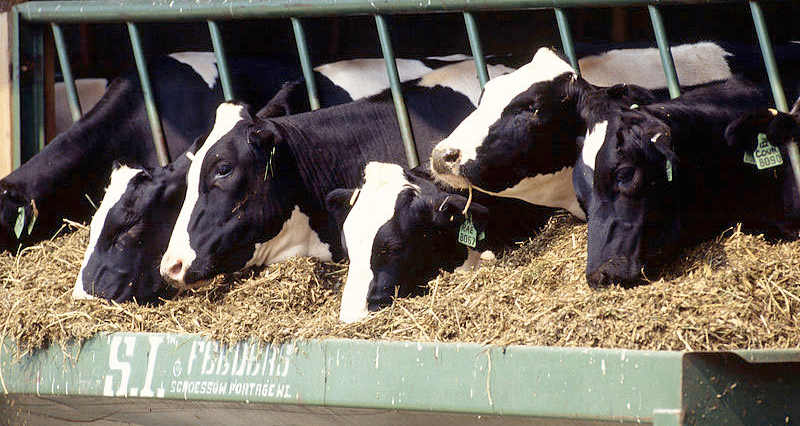
The risk of diseases has a large effect on the economics of a farm, through payment for treatments and loss of production from the infected animals, as well as on animal welfare.
So, what if you could detect the onset of common diseases before any symptoms are even visible?
With the use of wearable technology for cattle and an understanding of dairy cow behaviour, we are beginning to be able to do just that, writes Dr Ruth Wonfor from the Institute of Biological, Environmental and Rural Sciences (IBERS) at Aberystwyth University.
What do we know about disease behaviour?
As in humans, it is clear that illness affects animal behaviour.
We know that sick animals will normally be more lethargic, isolate themselves and lose their appetite.
Behavioural changes are controlled by the brain in response to illness to help the animal get better.

Changes are often seen in several aspects, including social exploration. For example pre-weaned dairy calves are less likely to approach an unknown object if they have clinical bovine respiratory disease.
However, it is likely that in intensive housing systems, some of these more natural behaviours will be suppressed.
Therefore, most of our knowledge about how sickness affects behaviour of dairy cows is based around their activity and feeding behaviour.
The behaviours related to most of the common production diseases in dairy cows have been established.
Lame cows are known to spend longer lying down, change their weight distribution and walk at a slower speed compared to healthy animals.

Dairy cows with mastitis idle more and spend less time lying down, feeding, ruminating and grooming.
It is also suggested that, as chronic illnesses appear to instigate more behavioural changes, monitoring of this can distinguish whether an animal has an acute or chronic illness.
Does behaviour change before diseases are visually detected?
With this behavioural knowledge in mind, scientists have wondered whether there are subtle changes in livestock behaviour before any clinical symptoms of disease are visible and if so, how long before an animal becomes ill does this start?
Research has been carried out for a number of clinical production diseases to understand whether behaviour indicators can act as early disease indicators.
In most cases examined, feeding behaviour so far seems to be a relatively reliable predictor for disease onset.
Cattle with acute lameness have shown a reduction of time spent at the feeder of around 19 minutes every day for the week before lameness was visualised, along with a reduction in the number of visits to the feeder.
Cows who develop metritis 7-9 days after calving, spend less time at the feed bunker before they have even calved.
For animals with ketosis, it is clear that feeding and activity behaviour changes, with a reduction in feed intake in the 3 days before diagnosis and a 20% increase in standing time in the week before calving.
However, high variability has been noted for feeding behaviour linked with udder diseases, and so would not be a good predictor of disease development for mastitis.
In all cases, it is unknown if these changes in behaviour are a cause or effect of a developing illness, is it the reduced feed intake that causes the disease, or is this just an early effect of the illness?
Further work is needed to understand this, and an understanding may influence selection traits in the future.
How can we detect these changes?
Many of these changes that occur before visual disease onset are extremely subtle, and difficult to detect in practice without technology.
With the rise of precision livestock farming, there are many wearable devices available on the market that detect changes in behaviour amongst other variables.
Most of these measure activity through accelerometers fitted to the leg or neck, or rumen function via electronic boluses.
Farm devices such as walkover force sensors can also be utilised to assess gait consistency.
Many of these devices are well programmed to detect changes such as coming into oestrous, although most are less well known for their ability to detect changes in behaviour for early detection of diseases.
Yet many devices are able to detect potential illness at a basic level, animals are flagged with a warning when they exhibiting behaviour that is different to the rest of the herd, someone is then required to go and check the animal and investigate what may be wrong.
Mathematical predictor algorithms
To improve on the ability to detect a specific disease and the accuracy of these devices, the behavioural research completed to date must be utilised to develop mathematical predictor algorithms.
These algorithms will then be able to use and simplify the data that the sensors collect to provide a simple notification system to alert that a cow is likely to develop a certain illness soon.
This should mean that the cow in question will be closely monitored or examined further to catch the disease before any visual symptoms develop.
Although systems have been researched to detect diseases such as lameness and mastitis, no system will be truly useful to everyday practice until a simplified answer can be provided from the depth of data that will be needed to determine the status of the cow.
Work at IBERS, Aberystwyth University is working to develop the use of a GPS based early detection system for lameness. So far, the project has established a model that can predict whether cows are resting, grazing or walking, using affordable GPS systems.
Work with Farming Connect at the Trawscoed Innovation Farm, will now go on to use this model to establish whether this system can be used to detect behavioural changes to indicate early onset of lameness. Look out for updates on this project as it develops.
